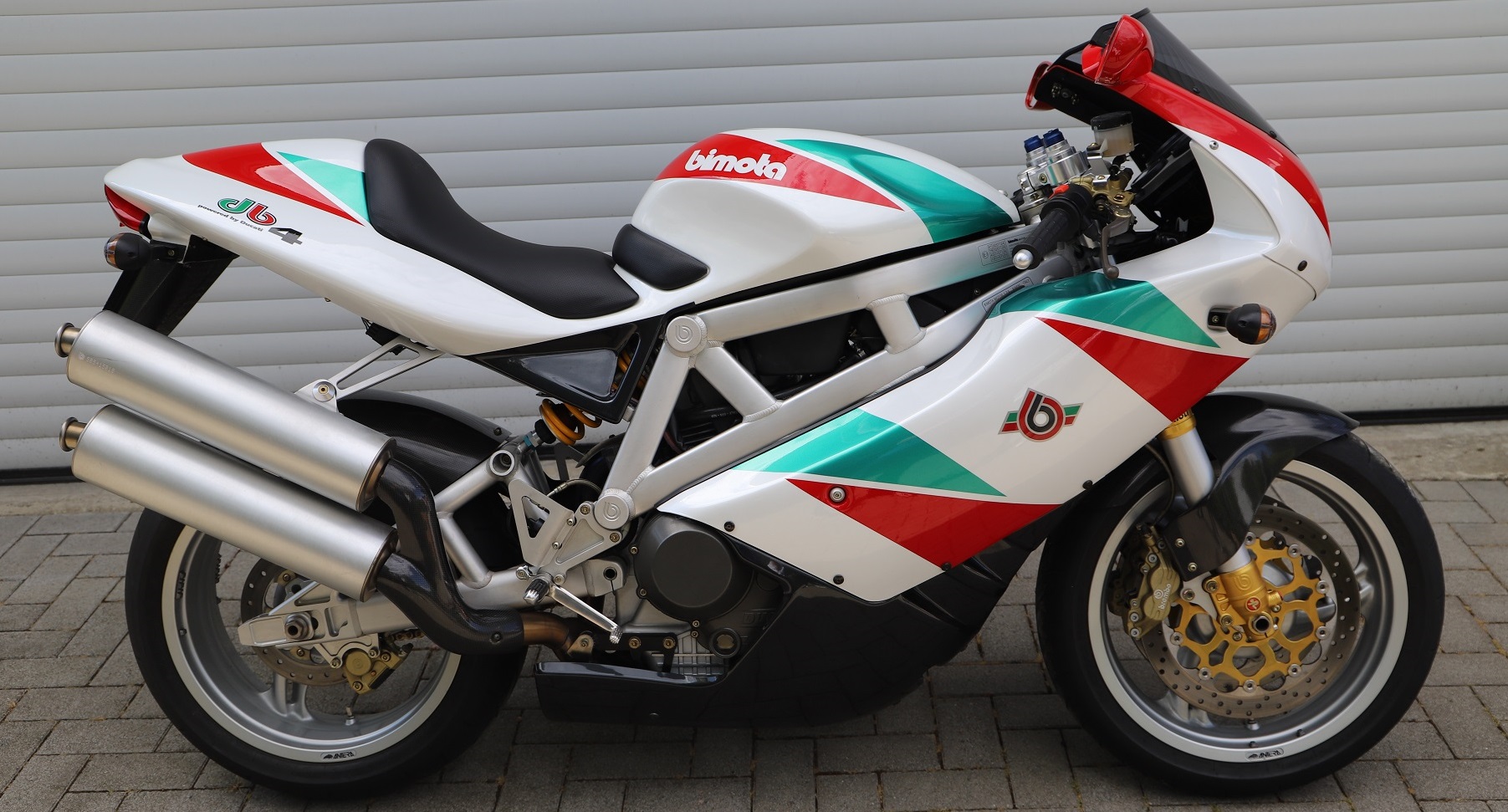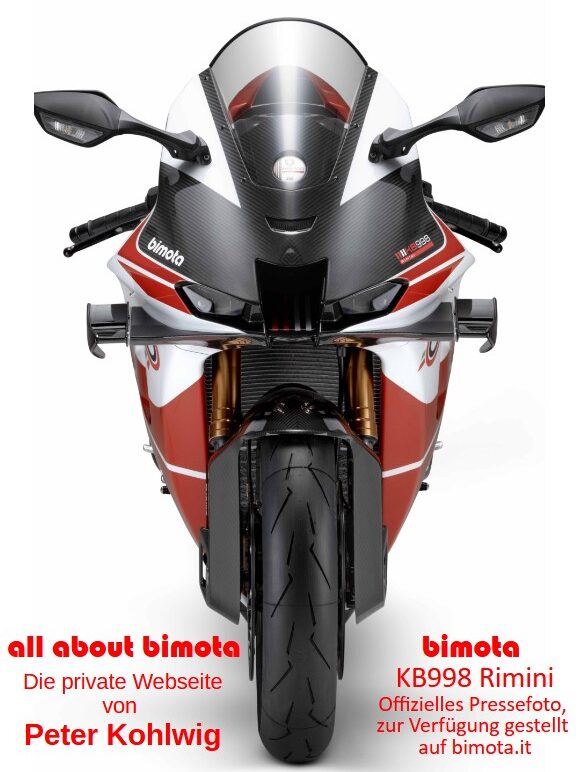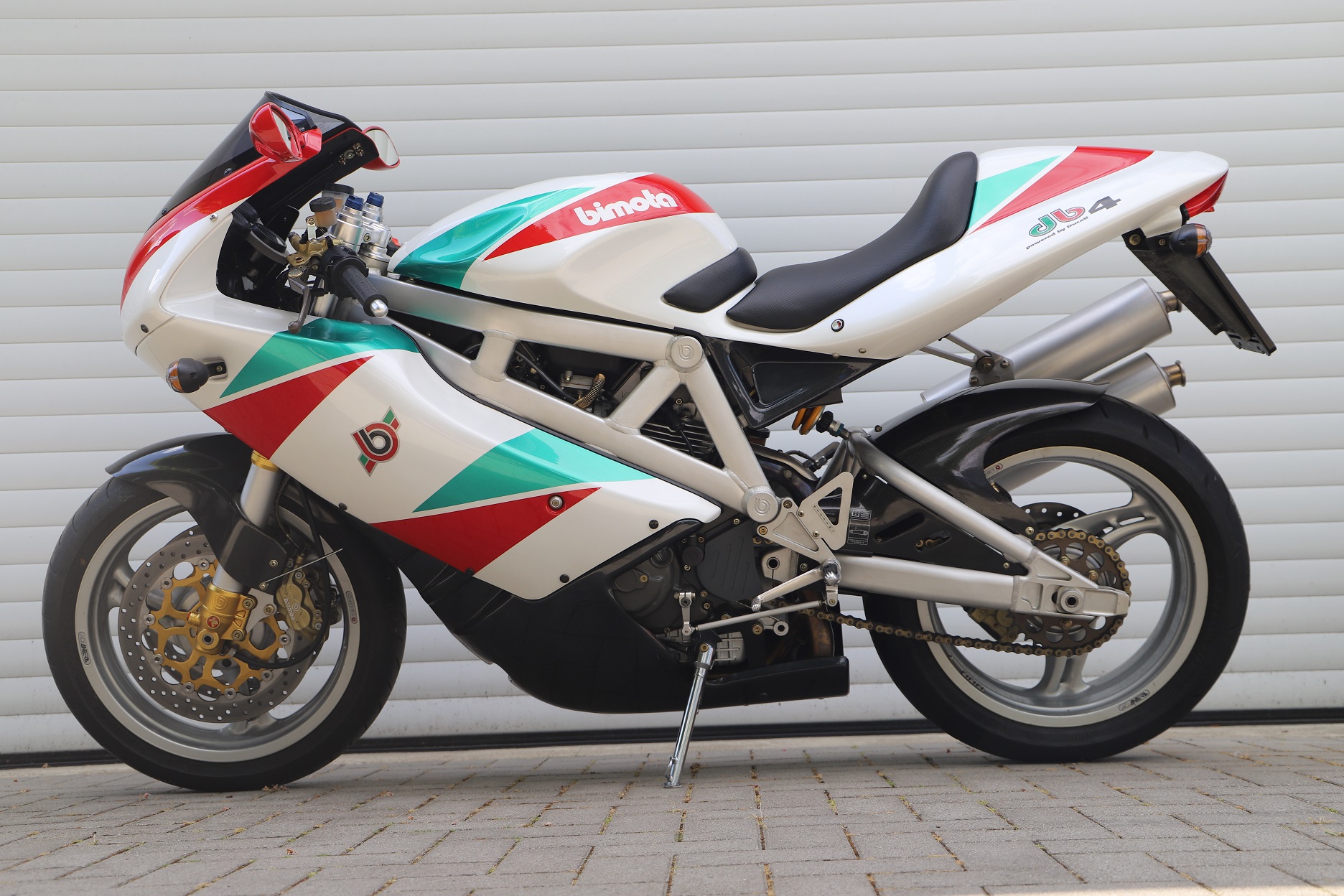
| Designer | Pier Luigi Marconi | Premiere | Munic 1998 |
| Production period | 1999 – 2000 | Production numbers | 264 |
| Power | 63 KW (86 PS) | Displacement | 904 cc |
| Topspeed | 220 km/h | Weight | wet 185 kg dry 168kg |
| Price | 26.000 DM (1999) | Colours | white / red / green red / black / silver black / yellow / silver |
| Technical basis | Ducati 900 SS |
Four years after the DB3, Bimota introduced the DB4 in 1998, a sportbike based on its predecessor. At its unveiling at Intermot in Munich, the DB4 and SB8R were the last new models Bimota brought to market before its bankruptcy in 2000.
At the start of production, the DB4 was equipped with Ducati’s 904 cc carbureted engine, dual exhausts, and the Tri-Colori paint scheme first used on the DB1.
From the 2000 model year onward, the DB4 received Ducati’s new 900 Supersport engine, producing 89 hp with electronic fuel injection. Two new paint schemes were introduced: black/red/silver and black/yellow/silver. The dual exhaust system from the earlier models was removed, and the new versions were distinguishable by a sticker reading iniezione elettronica.
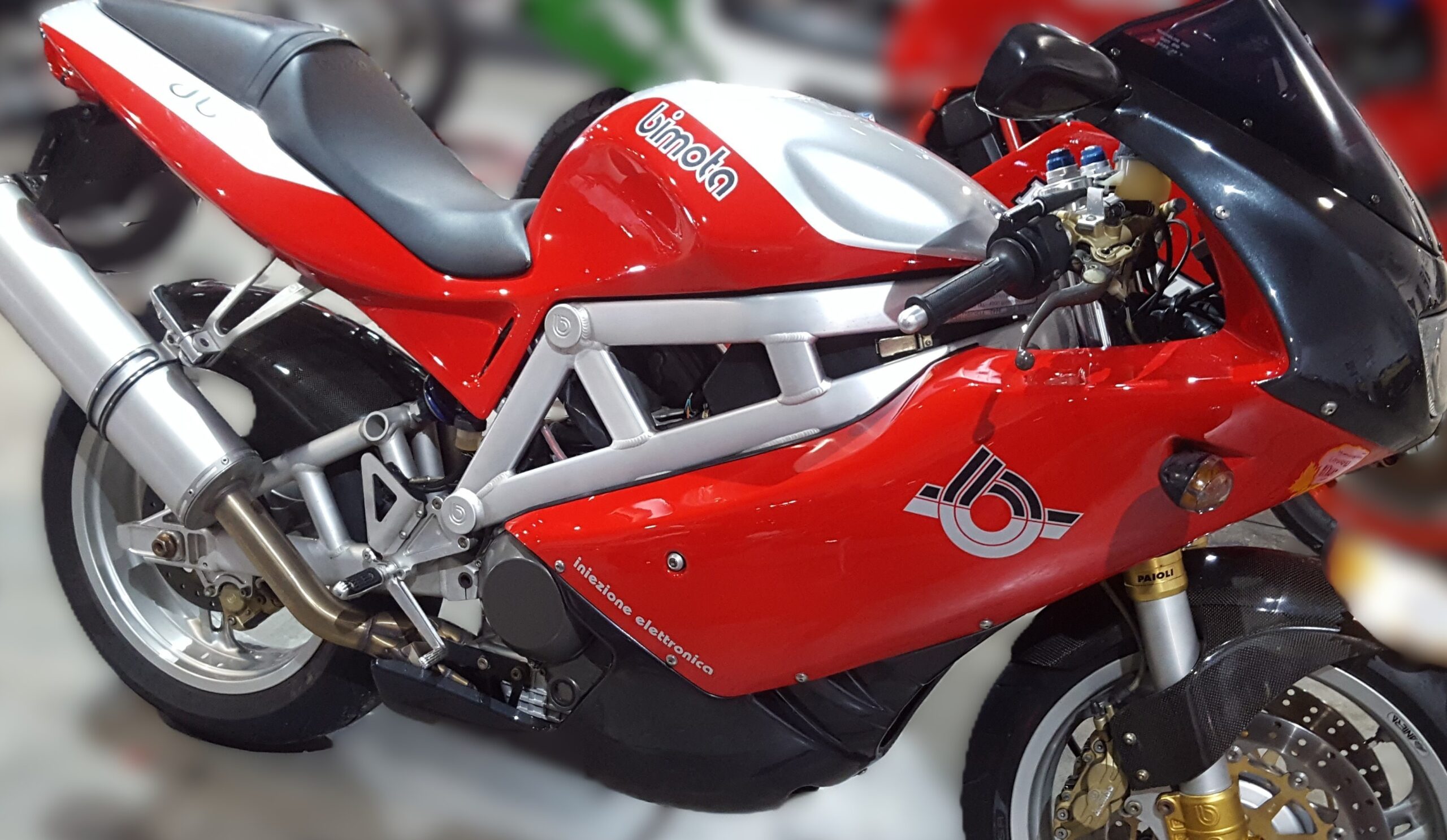
The DB4 was well received by motorcycle journalists. In issue 17/2000, the magazine Motorrad compared the DB4 to the Ducati 900 Supersport and the Laverda 750 S Formula, stating:
“The DB4 undoubtedly impresses with its delicate, slim silhouette, narrow seat, cleanly designed half-fairing, and numerous small details that catch the eye. Machined triple clamps, clip-on handlebars, footpeg mounts, an artfully crafted aluminum frame, and an intricately built trellis swingarm—an attention to detail that seemed almost forgotten nowadays. The Bimota DB4 marks the return of Rimini’s craftsmen to their traditional values.”
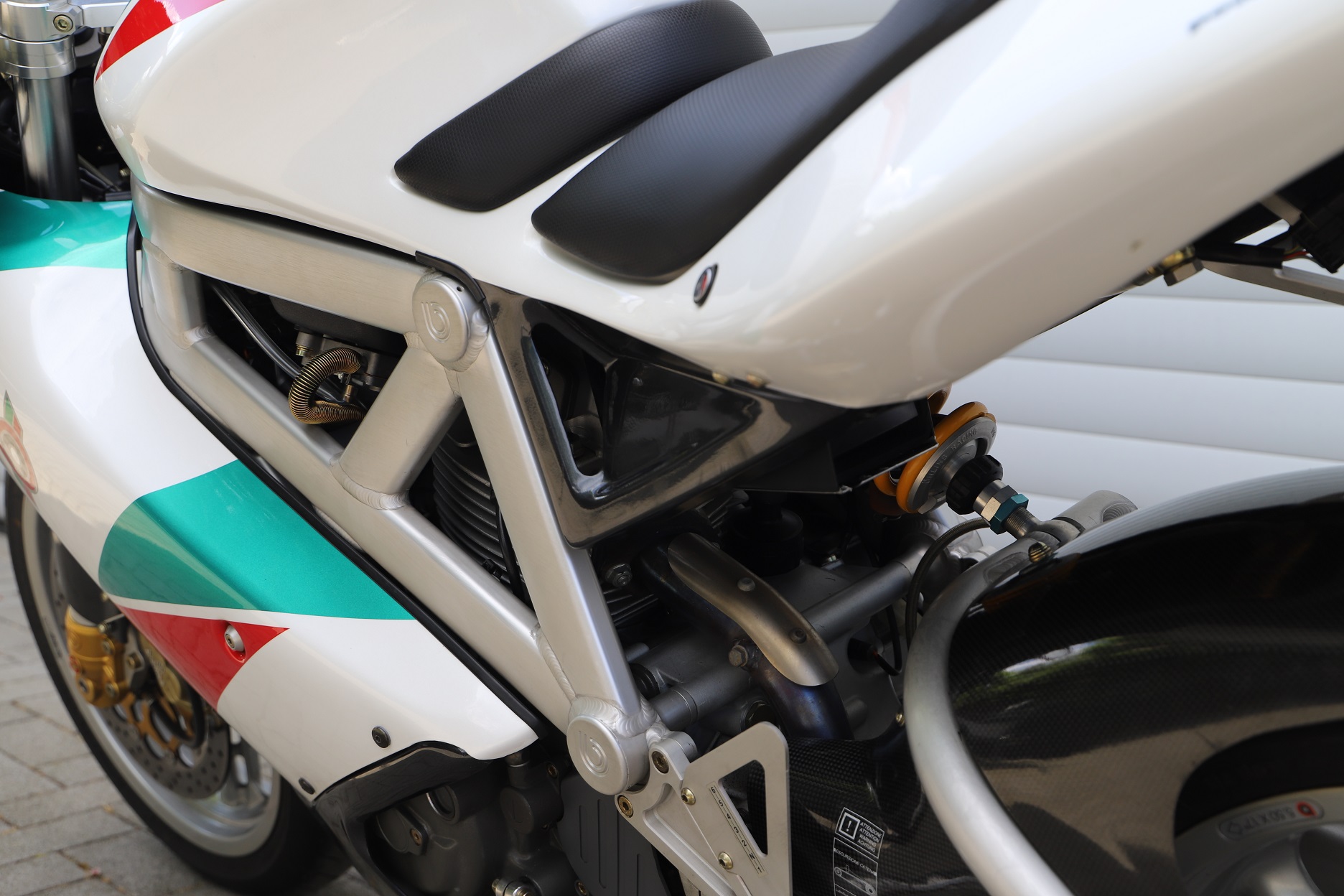
The DB4 also won over testers with its riding experience:
“Fully fueled, the Bimota weighs just 185 kilograms, making it the lightest four-stroke street sportbike. As a result, it is effortless to ride at low speeds, joyfully swinging through tight corners—fantastic handling, razor-sharp precision. Accelerating out of turns is pure delight, tackling a tricky section is sheer pleasure.”
This agility was a result of its short 1,370 mm wheelbase, a 67° steering head angle, and a trail of just 91 mm.
